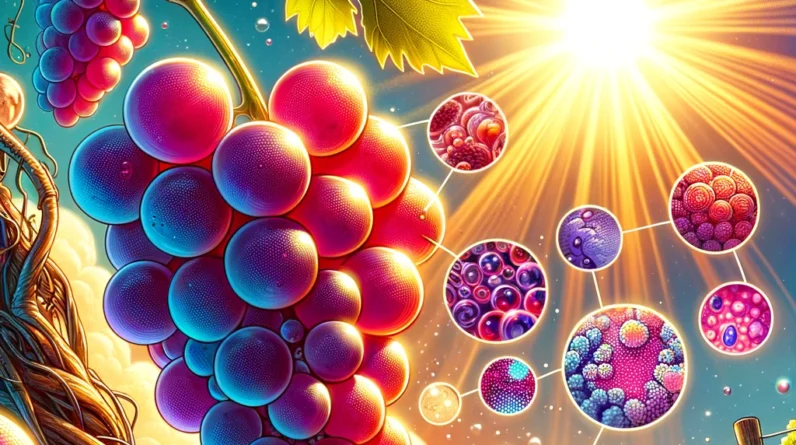
Piquette: The Sustainable Choice for Wine Lovers
In the evolving landscape of winemaking, piquette is emerging as a delightful curiosity, blending historical roots with modern sustainability.
Though still a niche choice, its presence is growing, appealing to those in pursuit of unique, eco-conscious beverages.
This light, refreshing wine, created from the remnants of winemaking, is gaining attention for its eco-friendly production and unique flavor profile.

What Is Piquette?
Piquette is a delightful, eco-friendly drink.
It’s crafted from what’s left after making wine.
These leftovers include grape skins, seeds, and stems.
By adding water to this grape pomace, a new mixture is created.
This mixture gets a second life through fermentation. The result? A light, bubbly beverage that’s easy to enjoy.
The history of piquette stretches back centuries.
It began in ancient Europe.
Vineyard workers, looking for a way to quench their thirst, invented it.
They needed a drink that was refreshing but wouldn’t slow them down.
Piquette was the perfect solution.
It was low in alcohol, making it suitable for long, hot days in the vineyards.
Today, piquette is gaining new fans.
It appeals to those seeking sustainable and unique drinks.
Its production process is eco-friendly. It prevents waste by using materials that would otherwise be discarded.
Plus, piquette’s light and refreshing taste make it a hit at gatherings.
It’s perfect for sipping on a warm afternoon or pairing with a casual meal.
In summary, piquette is more than just a drink.
It’s a testament to resourcefulness and sustainability in winemaking.
Its origins tell a story of hardworking vineyard workers.
And its modern appeal lies in its environmental benefits and delightful taste.
Piquette is truly a drink with a rich past and a promising future.

The Appeal of Piquette
Sustainable and Eco-Friendly
Today, being green is more than a trend; it’s a lifestyle.
Piquette stands out as a champion of green winemaking. It’s made from grape pomace, the bits left after pressing grapes for wine.
This approach is ingenious. It turns potential waste into something wonderful.
Wineries practicing this method are not just making drinks. They’re making a statement.
They show that delicious beverages can be produced responsibly.
For eco-aware shoppers, piquette is a dream come true. It aligns with their values, making it a guilt-free choice for their wine cellars.
Unique Flavor Profile
Piquette breaks the mold with its taste. It’s not your typical wine.
This drink is light, often gently fizzy, and very refreshing.
Imagine a warm summer day turned into a drink.
That’s piquette. Its lower alcohol content means you can enjoy it without worry.
It’s the perfect pick for daytime gatherings or any time you want a lighter option.
Piquette is an invitation to explore beyond traditional wines.
It’s for the curious and the adventurous.
Whether you’re new to wine or a seasoned connoisseur, piquette offers a fresh perspective.
Its uniqueness lies not just in how it’s made, but in every sip.

Examples of Piquette Wines
To give you a taste of what’s out there, here are a few piquette wines that exemplify the variety and innovation within this category:
Old Westminster Winery Piquette: Hailing from Maryland, this winery offers a piquette that’s bright, slightly fizzy, and perfect for a summer day.
Made from a blend of various grape remnants, it’s a testament to the creativity and sustainability possible in winemaking.
Looking for that perfect wine glass?
Tired Hands Brewing Company’s Piquette: Though primarily a brewery, Tired Hands has ventured into piquette, showcasing the crossover appeal of this beverage within the craft drink community.
Their version is a fascinating blend of wine tradition and craft innovation.
Wild Arc Farm Piquette: Based in New York’s Hudson Valley, Wild Arc Farm produces a piquette that emphasizes organic farming and natural winemaking processes.
Their piquette is a standout for those interested in the farm-to-glass movement, offering a crisp, refreshing taste that echoes the farm’s commitment to sustainability.

Market Awareness and Future Potential
While piquette may not be as widely recognized as other wines, its niche appeal is growing, especially among millennials and Gen Z consumers attracted to its sustainability and unique story.
Wine bars and social media are playing key roles in introducing piquette to a wider audience, suggesting a bright future for this eco-friendly wine.
As awareness grows, so does the potential for piquette to become a more mainstream choice among environmentally conscious and adventurous wine drinkers.
Its combination of historical charm, sustainability, and refreshing taste make it a fascinating addition to the world of wine.
In conclusion, piquette offers a glimpse into the future of winemaking, where tradition meets innovation and sustainability.
Whether you’re a wine aficionado or a casual drinker looking to explore, piquette provides a unique, eco-friendly option that’s worth discovering.
FAQs:
Q1: What exactly is piquette?
Piquette is a low-alcohol beverage made by rehydrating and fermenting the grape pomace left over after winemaking.
This process produces a light, refreshing drink that’s considered both sustainable and innovative.
Q2: How does piquette taste?
Piquette offers a unique flavor profile that’s typically light, slightly tart, and refreshingly effervescent.
It can vary in taste depending on the types of grapes used and the specific production methods, but it’s generally known for its easy-drinking nature.
Q3: Is piquette wine sustainable?
Yes, piquette is regarded as an eco-friendly option in the wine world.
By utilizing grape pomace, winemakers are able to reduce waste and create an additional product from materials that would otherwise be discarded.
Q4: Can piquette get you drunk?
Given its lower alcohol content (usually between 4-9% ABV), piquette is less likely to lead to intoxication compared to standard wines.
It’s a popular choice for those seeking a lighter, more sessionable beverage.
Q5: Where can I buy piquette?
Piquette is available at select wine shops, especially those specializing in natural or sustainable wines.
You may also find it at wineries that produce piquette or online through specialty wine retailers.
Q6: How should I serve piquette?
Piquette is best served chilled, making it an ideal choice for warm weather or as a refreshing option for any casual occasion.
Its lightness pairs well with a wide range of foods, from light appetizers to heartier meals.
Q7: How does piquette fit into the craft beverage movement?
Piquette aligns with the craft beverage movement’s emphasis on artisanal production, sustainability, and innovation.
Its unique production method and history appeal to those interested in craft drinks that offer a story alongside a distinctive taste.
Q8: Is piquette a new type of wine?
While piquette has gained popularity recently, it’s actually an ancient beverage with a long history in European winemaking traditions.
Its resurgence is part of a broader interest in sustainable and innovative wine practices.
Q9: How is piquette different from traditional wine?
Unlike traditional wine, which is made by fermenting grape juice, piquette is produced by adding water to the leftover grape pomace from the winemaking process.
This results in a lighter, less alcoholic beverage that’s distinct from standard wines.
Q10. Can piquette be considered a wine?
Piquette is often categorized as a wine-like beverage due to its production process and alcoholic content.
However, it’s technically distinct from wine because it’s made from rehydrated pomace rather than fermented grape juice.







